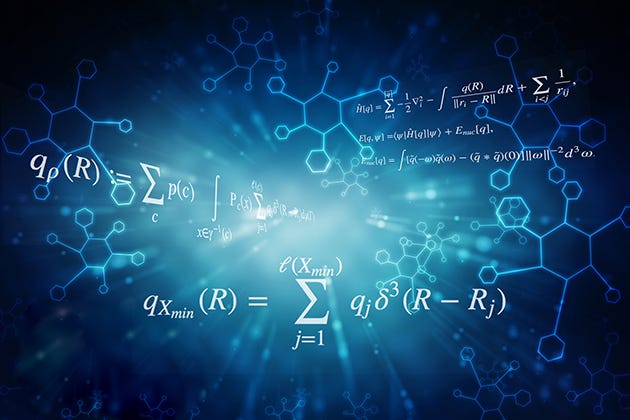
Introduction to Machine Learning and Statistical Modeling
Machine learning and statistical modeling are two fundamental approaches to data analysis, with distinct goals, techniques, and applications. While both methods are rooted in statistics and mathematics, they differ in their underlying principles, methodologies, and focus areas. This comprehensive guide provides an in-depth exploration of the key differences between machine learning and statistical modeling, helping you choose the most appropriate approach for your data-driven decision-making needs.
1. What is Machine Learning?
Machine learning is a subfield of artificial intelligence (AI) that focuses on developing algorithms that can learn from and make predictions or decisions based on data. These algorithms are designed to automatically improve their performance through experience, without explicit programming. Machine learning techniques are broadly classified into three categories: supervised learning, unsupervised learning, and reinforcement learning.
2. What is Statistical Modeling?
Statistical modeling is a branch of statistics that involves the development and analysis of mathematical models to describe, explain, and predict real-world phenomena. These models are constructed based on statistical principles and are used to make inferences, test hypotheses, and quantify uncertainty. Common types of statistical models include linear regression, logistic regression, and time series models.
3. Key Differences Between Machine Learning and Statistical Modeling
a. Goals and Objectives: Machine learning focuses on developing algorithms that can make accurate predictions and decisions based on data, with the primary goal of optimizing performance. Statistical modeling, on the other hand, aims to build models that provide insight into the underlying relationships between variables, with the primary goal of understanding and explaining the data.
b. Model Complexity: Machine learning algorithms often involve more complex models than statistical models, as they are designed to capture complex patterns and nonlinear relationships in the data. Statistical models typically prioritize simplicity and interpretability, with an emphasis on identifying the most important variables and their relationships.
c. Assumptions and Constraints: Statistical modeling relies on a set of assumptions about the data, such as normality, linearity, and independence, which must be met for the model to be valid and reliable. Machine learning algorithms are generally more flexible and can handle a wider range of data distributions and relationships, making them better suited for complex and high-dimensional data.
d. Model Selection and Validation: In statistical modeling, model selection and validation are based on statistical tests, criteria, and diagnostics, such as the likelihood ratio test, Akaike Information Criterion (AIC), and residual analysis. Machine learning relies on cross-validation, performance metrics, and optimization techniques, such as k-fold cross-validation, accuracy, and gradient descent, to select and validate models.
4. Choosing Between Machine Learning and Statistical Modeling
When deciding between machine learning and statistical modeling for your data analysis needs, consider the following factors:
a. Problem Type: If your primary goal is to make accurate predictions and decisions based on data, machine learning may be more appropriate. If your primary goal is to understand and explain the relationships between variables, statistical modeling may be more suitable.
b. Data Complexity: For complex and high-dimensional data, machine learning algorithms are generally better equipped to handle the challenges, such as nonlinear relationships and multicollinearity. For simpler data with well-defined relationships, statistical models may be more efficient and interpretable.
c. Interpretability: If interpretability and explainability are important considerations for your analysis, statistical modeling may be the preferred choice, as the models are typically easier to understand and communicate. Machine learning algorithms, especially deep learning models, can be more difficult to interpret and explain.
d. Computational Resources: Machine learning algorithms can be more computationally intensive than statistical models, particularly for large datasets and complex models. Consider the available computational resources and the trade-offs between performance, complexity, and computation time when choosing between machine learning and statistical modeling.
e. Domain Knowledge: Statistical modeling can be particularly beneficial when domain knowledge is available, as it can help inform the selection of variables, the development of the model, and the interpretation of the results. Machine learning algorithms are more data-driven and can be more effective when domain knowledge is limited or when the relationships between variables are unknown.
5. Real-World Applications
Both machine learning and statistical modeling have a wide range of real-world applications across various industries and domains:
a. Finance: In finance, machine learning algorithms can be used for credit scoring, fraud detection, and algorithmic trading, while statistical models can be employed for risk management, portfolio optimization, and financial forecasting.
b. Healthcare: Machine learning can be applied to medical image analysis, drug discovery, and personalized medicine, whereas statistical models can help identify risk factors, analyze clinical trial data, and evaluate the effectiveness of interventions.
c. Marketing: Machine learning techniques can be used for customer segmentation, sentiment analysis, and recommendation systems, while statistical models can help analyze the impact of marketing campaigns, identify trends, and forecast sales.
d. Social Sciences: In social sciences, machine learning can be used to analyze social media data, detect fake news, and predict election outcomes, while statistical models can help investigate the relationships between social, economic, and political variables.
Conclusion
Machine learning and statistical modeling are both powerful approaches to data analysis, with distinct goals, techniques, and applications. Understanding the key differences between these methods can help you choose the most appropriate approach for your specific data-driven decision-making needs. By mastering both machine learning and statistical modeling techniques, you can enhance your data analysis toolkit and become a more versatile and effective analyst, researcher, or professional in the rapidly evolving field of data science.
Find more … …
How to get Statistical Summary of a Dataset | Jupyter Notebook | Python Data Science for beginners